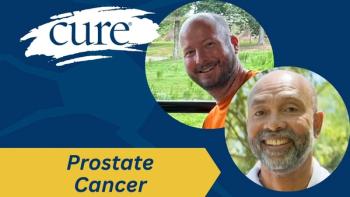
When the unexplainable happens
About six months ago, I received a call at my house from a family friend who was in distress. As a community oncologist, it is not uncommon for me to receive cancer crisis calls from family, friends or someone I may not even know. This call concerned the grandfather, whom I will call John, of a friend of one of my boys; the caller was the boy's mother, whom I will call Donna, daughter of the patient. I had actually known about the situation for some time. Donna and I had briefly talked about it at little league games or at places where parents run into each other. John had been battling liver cancer for over four years. He was being treated at a large, well-known cancer hospital and the doctors there had done an excellent job of keeping the cancer at bay. Over the years, parts of his liver had been surgically removed, others boiled with hot probes and many blood vessels had been choked off to deprive the cancer of oxygen. When these local measures no longer worked, he took chemotherapy and like a good soldier, even enrolled in clinical trials testing experimental ways to treat the cancer. But John felt that the oncologist taking care of him now was mainly interested in enrolling him in study after study and that none of the chemotherapy or research treatments had done any good. The doctor did not answer his questions, talk to him about prognosis, or treat his ever-increasing pain. By the time his daughter reached out to me, the cancer was growing widespread in his liver and lungs, and John was told to enroll in a hospice program close to home. The center could not do anything more for him. They made him an appointment to return in three months, if he was still alive. Needless to say, the patient and his family were distraught.Although I did not relish caring for a friend's dying parent, I agreed to see John in my office. I was thinking that I could at least make him feel cared for and supervise his end-of-life care. As John walked into my office and forced a smile, he appeared to be a man in the middle of the ocean holding onto a sinking boat. His wife and children filed in somberly. We started out by getting acquainted, talking about his life a bit and what he wanted most for the remainder of it; we even laughed some. John said he accepted that he was dying, that he could barely get out of bed and had no appetite, but that he just wanted to feel better if possible. He wanted to be hungry again, eat his favorite pasta meal, and be able to move without severe pain.I first addressed his pain by prescribing a steady, more potent pain regimen. I had to assure him that taking narcotics would not make him an addict, something he feared and which greatly frustrated his family. Next, I was concerned about his shortness of breath, so I ordered a lung scan which revealed blood clots in his lungs (pulmonary emboli) in addition to the tumor deposits; I prescribed an injectable blood thinner, called enoxaparin (Lovenox). He seemed to immediately improved with these changes but he soon developed severe pain in his hip and I diagnosed new bone metastases. I convinced him to undergo a course of radiation therapy (he did not think it was worth the trouble), which fortunately did greatly diminished his pain. I was relieved that John's pain and breathing improved though his appetite still remained poor. I was not sure how much time he had left. Without us noticing, the days led to weeks which somehow led to months as John's condition gradually improved. He was getting out of bed easily now, going shopping with his wife, even mowing the lawn again. And he was finally eating more; his gaunt appearance began to fill out toward normal. His mood was much less depressed. It was as if the grip of death had given him a respite and left his body. It took us all by surprise. The family asked, "So, what's going on with his cancer?" I said frankly that I did not know but that we weren't treating it so I couldn't conceive that it was being controlled. But it is not usually the case that a cancer progresses and a patient's condition improves so I was indeed perplexed. Furthermore, I did drawn a tumor marker of liver cancer, called AFP, measurable from the blood. When I first met John it was over 7,000 (normal less than 5). Now two months later, it had inexplicably dropped to 300. I told John and his family that I needed confirmation and another measurement before I believed that huge drop. Sure enough, two weeks later the AFP was 220. In order to see what was happening with the cancer, and to answer their question more accurately, I sent John for a CAT scan. The result was also inexplicable but wonderful: the tumors in his liver and lungs had stopped growing and were actually a little smaller! I was incredulous."How could John's cancer be shrinking?" I asked myself this question over and over again as I tried to provide the family with some answers. Could it be the Lovenox? There have been no reports of cancer improving with this blood thinner, though there has been some talk of this possibility in the medical literature. Could it have been the radiation therapy? There have been rare reports of radiation therapy to a focal cancer deposit leading to regression of metastatic cancer in the rest of the body due to activation of an immune response (called an "abscopal effect"). Could it be John's change in attitude, from depression and hopelessness to a feeling of lightness and the joy of living? There certainly has been alot written about a person's "attitude" toward cancer and how important it is to maintain hope. Could it be my role as a trusted physician? I only thought of this after Donna gave me this passage from the book Anatomy Of An Illness As Perceived By The Patient (1979, W.W. Norton & Company) by Norman Cousins:A prominent physician recalled of his physician father: "The instant he entered the sick room, the patient felt better. The art of healing seemed to surround his physical body like an aura; it was often not his treatment but his presence that cured." Francis Peabody's famous remark, "The secret of caring for the patient is in caring for the patient," is another way of stating that there is a miraculous moment when the very presence of the doctor is the most effective part of the treatment."I was certainly flattered by that sentiment but could not claim the credit here. No, John's improvement is strictly in the realm of the unexplainable. Regardless, we all shared a joyous moment when the results came in. In contrast, John experienced a different reception when he returned three months later to his original hospital, to which he had considerable loyalty. John and his family were looking forward to seeing the pleased look on his doctor's face but were rendered speechless when he did not comment at all on John's miraculous improvement. "He told me their CAT scans were much better and that I should go for more chemotherapy there." "Chemotherapy! Can you believe that?" John released a rare expletive as he relayed the encounter. We were all disappointed and surprised by this response. It is now six months since I first met John, and he continues to thrive. I do not know how much longer he has or why he is enjoying more time than expected. But when you are dealing with cancer and the unexplainable happens, in a good way, I say go with it.




